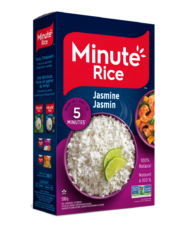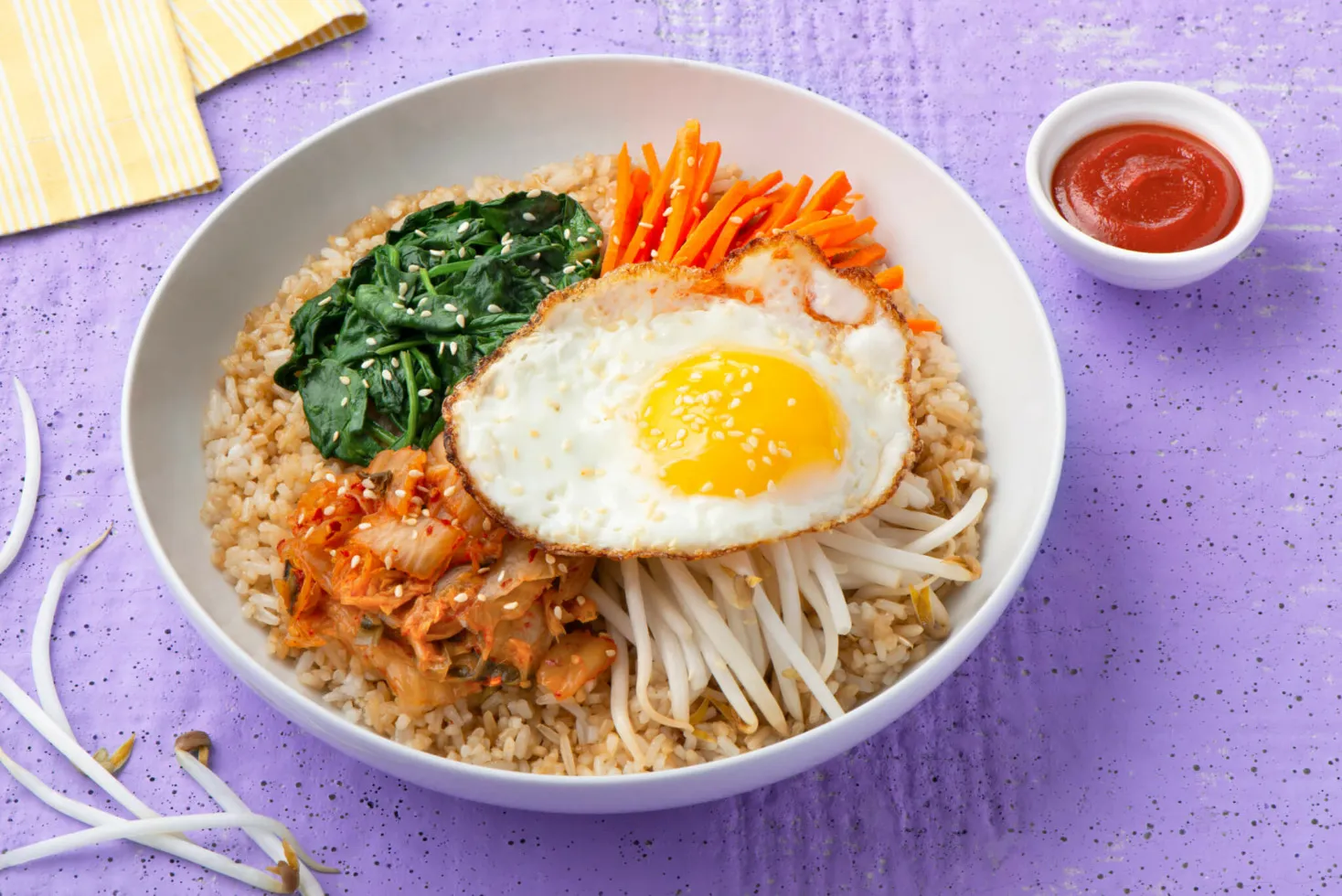




(
1 votes, average:
5.00 out of 5)
Instructions
Step 1
Prepare rice according to package directions.
Step 2
Heat 2 tablespoons of oil in a large pan over medium heat.
Step 3
Sauté spinach, garlic, ginger, salt and pepper for 3 to 5 minutes. Transfer to a bowl and keep warm.
Step 4
Wipe out pan. Heat remaining oil over medium-high heat. Stir-fry rice for 3 to 5 minutes, or until slightly crisp. Stir in soy sauce and vinegar.
Step 5
Divide rice among 4 bowls. Top each serving with bean sprouts, carrots, kimchi and a fried egg.
Step 6
Drizzle with Sriracha and sprinkle with sesame seeds.
Definition of Bibimbap
Bibimbap is a staple dish in Korea. “Bibim” refers to mixing multiple ingredients, and “bap” means rice. You can enjoy our easy take on this classic Korean rice bowl for a quick dinner any night of the week.
Traditionally served in a sizzling stone bowl coated with sesame oil, the rice is applied directly to the stone, giving it a crunchy layer. For our recipe, instead of a hot stone bowl, we use jasmine rice and fry it up in a mixture of soy sauce and rice wine vinegar.
This bibimbap gets topped with sautéed spinach, garlic, ginger, salt and pepper, bean sprouts, and a sunny-side egg. Then, you can finish it with your choice of kimchi, carrots, sesame seeds or all three!
Wait, There’s More
For this recipe, a good dose of Sriracha is ideal. However, this classic Korean dish can also pair with a drizzle of either gochujang sauce or doenjang. What’s the difference? Gochujang is a sweet and spicy fermented chilli sauce (think of it as the Sriracha of Korean condiments), while doenjang is a fermented soybean paste. Both pack a lot of flavours, though doenjang is on the milder side.



 4
4  15 min
15 min 


